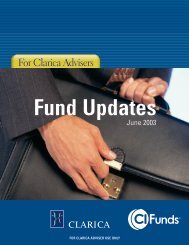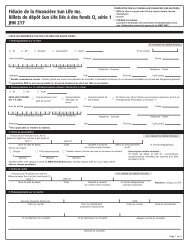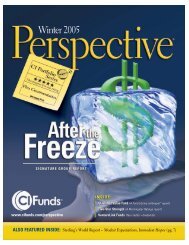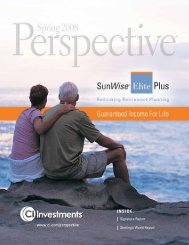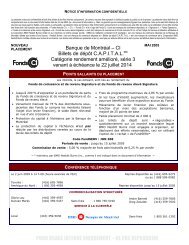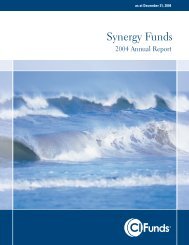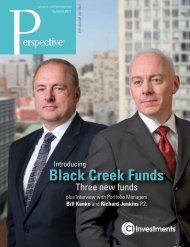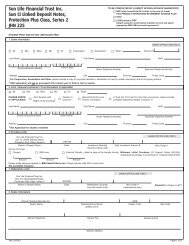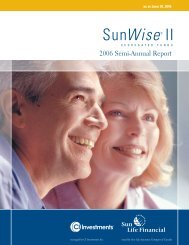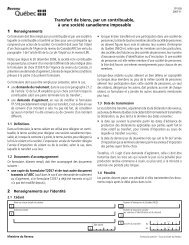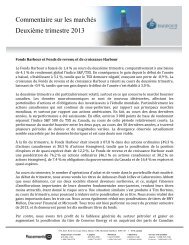March - CI Investments
March - CI Investments
March - CI Investments
- No tags were found...
Create successful ePaper yourself
Turn your PDF publications into a flip-book with our unique Google optimized e-Paper software.
Looking inside average returnsThe third key decision for investors is to look beyondaverages. There is good data on stock market returns in theUnited States going back to 1926. In the 85 years since then,after-inflation returns have averaged 6.6 per cent.The big difficulty with an average number is that often you’llbe below it. Given the high cost of underperforming yourreturn assumption, you need to look beyond the averagereturn to the distribution of returns that got you to thataverage – that will tell you how badly you might fall shortbased on historical precedent.Recently, I spent some time with Michael Nairne and histeam at Tacita Capital, looking at long-run total returns(including both capital appreciation and dividends) on theStandard & Poor’s 500 stock index.Since 1926, there have been 65 20-year periods. If we list thereal returns during those 65 periods from highest to lowestand look at how often those returns happened, here’s whatyou end up with (See table).Picking your numberIn deciding on the expected return for the stock componentof your savings, you could pick the after-inflation return that’shalfway down the list; that would give you a return of 8.5 percent, but risks erring on the optimistic side. For those whowant to be more conservative, you should choose one of thelower numbers – the 5 per cent that was achieved two-thirdsof the time or the 3.3 per cent that was exceeded 80 per centof the time. Or you could be really cautious and pick the 1.8per cent that was delivered 95 per cent of the time, in 62 outof 65 20-year periods.Of note, the worst after-inflation returns all occurred duringthe high-inflation years in the 1970s. As a result, yourassumption about the return on the stock component ofyour savings will be heavily influenced by the concern abouta return to inflation. Picking the right return assumption foryour investments will vary with your attitude toward risk. Byfocusing on after-tax returns, taking a long-term view anddigging deep into the historical experience, you can end upwith a realistic number that strikes the right balance betweenundue optimism and extreme pessimism.Annual return after inflation in 6520-year periods – 1926 to 2009:Return% of the timethis happened13.3% 1%12.7% 5%11.9% 10%10.8% 20%9.3% 33%8.5% 50%5.0% 67%3.3% 80%2.2% 90%1.8% 95%0.8% 100%Dan Richards is Founder and CEO of Clientinsights.ca.He is a faculty member in the MBA program at the RotmanSchool at the University of Toronto.PAGE 33 • SPRING 2010 PERSPECTIVE AS AT MARCH 31, 2010



